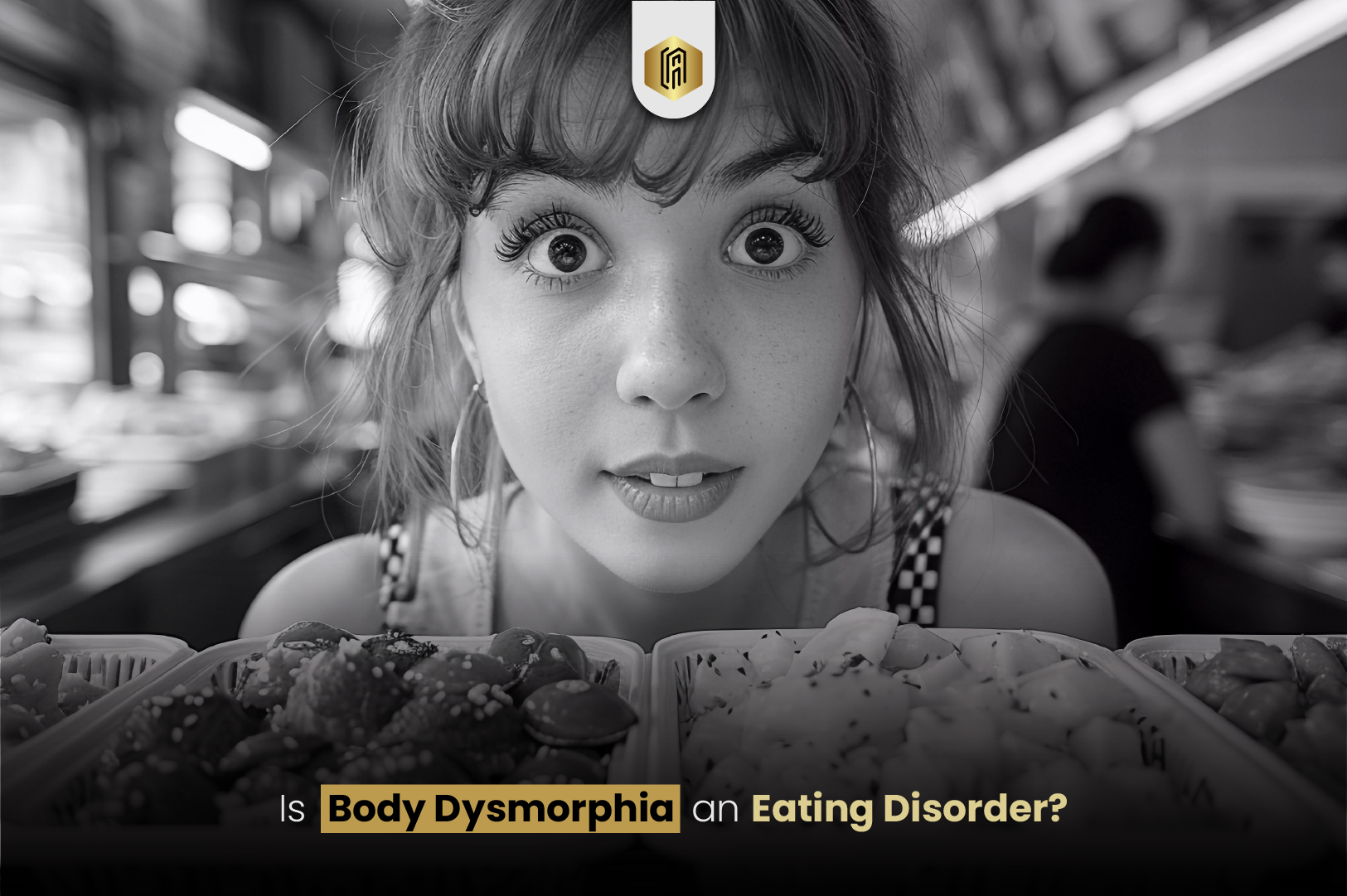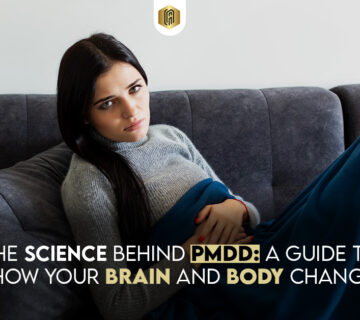Body image issues often lead us to think of eating disorders, like anorexia or bulimia. But there’s another issue named Body Dysmorphic Disorder (BDD). It deals more with how someone views their body, not just eating habits. Body perception, not just eating habits, is what this concerns. Is body dysmorphia an eating disorder? It’s complex. But exploring how the two connect is important.
We’re going to explore the link between body dysmorphia and eating disorders. We’ll see how people juggling both these issues confront hurdles every day. We’ll also look at related conditions, like ADHD, and its connection to BDD. Let’s look at what sets these disorders apart and their effects on mental and physical health.
Discover calm at Ascension Psychiatric Services. We guide you to understand how body dysmorphia connects with eating issues. Our team provides kind support toward a better self-view. Contact us today.
What Is Body Dysmorphia?
Body Dysmorphic Disorder (BDD) involves an obsession with imagined physical flaws. This differs from occasional insecurities. BDD thoughts are overwhelming and lead to distress and isolation. Though BDD focuses on appearance, it is not an eating disorder.
BDD affects both our mental and physical health, interestingly. It can cause depression and make people avoid socializing. So, is body dysmorphia an eating disorder? People with BDD can’t manage their obsessions. BDD and eating issues both concern body image. Even so, they’re sorted into separate categories. This is because each condition affects individuals in unique ways.
Understanding Eating Disorders
Eating disorders like anorexia and bulimia are about harmful habits. They are tied to food, eating, and body weight. They regularly emerge from a skewed body view and the need to manage weight or form. The most common eating disorders include:
-
Anorexia Nervosa
People with anorexia nervosa severely limit food and lose weight. They irrationally fear gaining weight and often have body dysmorphia. This condition distorts their self-image. It causes a bad loop of hunger and saying no to food. Anorexia hurts not only the body but also how a person views the world.
-
Bulimia Nervosa
Bulimia nervosa holds people in a loop fueled by a skewed perception of their bodies. They overeat in one go, then induce vomiting or resort to laxatives to purge. The desperate attempt to manage weight hints at a bigger problem with self-image. Bulimia, like anorexia, stems from a fear of being fat.
Eating disorders and BDD come from not being happy with how someone looks. They work in different ways, though. People with BDD usually think one part of their body is not good enough, but they don’t focus on weight.
Body Dysmorphia vs Eating Disorder
Body dysmorphia and eating disorders share a link, yet they’re not identical. Eating disorders concentrate on harmful eating practices to manage weight. In contrast, body dysmorphia centers on imagined physical flaws. These flaws can involve size but often do not. Despite the connection, each disorder has unique focuses and symptoms.
Let’s say someone loses weight but suffers from body dysmorphia. Even after hitting their weight goals, happiness eludes them. They dislike how they look. Fixation may shift to other areas, like their nose, skin, or hair.
People with anorexia and body dysmorphia think they are fat. They are, in fact, critically underweight. Body dysmorphia vs eating disorders are hard to tell apart. They share traits but affect people differently. This makes both identification and addressing these issues more intricate.
Eating Disorders and Body Dysmorphia: Overlapping Symptoms
People with eating problems often have body dysmorphia too. These two problems usually happen together. Eating disorders and body dysmorphia push each other and keep negative thinking and actions going. For example, someone with BDD might start unhealthy eating because they want to “change” how they look through food or workouts.
A person with anorexia and body dysmorphia may limit their food intake. They want to lose weight and change a part of their looks that worries them. It’s vital to recognize this link. Mental health experts must tackle both issues together in therapy.
Body Dysmorphia and Anorexia: How Are They Linked?
Body dysmorphia and anorexia both involve skewed self-views. Anorexia sufferers see themselves as overweight, even when they’re underweight. Individuals with BDD obsess over some body parts considered flawed or out of scale.
Body dysmorphia and anorexia are often linked due to a high focus on looks. But BDD doesn’t pick and choose. It can affect anyone, regardless of their weight or diet. Somebody can have BDD without any eating problems. Similarly, they could have an eating disorder but no body dysmorphia.
ADHD and BDD: Is There a Connection?
Recent research peeks into the link between ADHD and BDD. ADHD, a neurodevelopmental condition, messes up our focus and self-control. It’s noted that some ADHD individuals might get BDD. This might be because they strongly react to not-so-nice comments about how they look. We still need more studies to untangle the tie between ADHD and BDD. But, clues suggest that people with ADHD may develop body image issues and anxiety. This could lead to problems like BDD.
BDD and Eating Disorders: Similarities and Differences
BDD and eating disorders, despite being separate ailments, have a few similarities. Both surround a fixation with looks and a warped self-view. Those with BDD might take dangerous steps to “fix” their defects. It’s like how someone with an eating disorder might exercise to slim down.
However, BDD doesn’t just focus on weight. Someone with BDD may obsess over any body part, like their skin, hair, or facial features. This difference helps clarify the question, is body dysmorphia an eating disorder? Often asked. They might be connected, but they express and impact people differently.
Treating Body Dysmorphia and Eating Disorders
For BDD and eating disorders, therapy, meds, and support groups help a lot together. CBT is a well-known method. It helps people recognize and confront unhelpful thoughts. When BDD and eating disorders coexist, therapy must address both. Support from loved ones, friends, and health experts is vital for healing. Promoting a wholesome, confident body image might be critical to conquering these hurdles.
Body Dysmorphia after Weight Loss
Even after losing weight, individuals might continue battling body dysmorphia. They could focus on sagging skin or less toned muscles instead of their weight-loss goals. So, the root problem of BDD persists, despite hitting their weight-loss targets.
Let’s Conclude Is Body Dysmorphia an Eating Disorder?
So, is body dysmorphia an eating disorder? Body dysmorphia and eating disorders share a connection, yet they’re not the same. Both circle around worried outlooks. Body dysmorphia mainly targets particular body part issues, not food habits or weight. Those with body dysmorphia, anorexia, BDD, and eating issues find it hard to recover after weight loss. These conditions are complicated. Reach out to a mental health expert for anyone dealing with these issues. It’s a vital move for healing.
FAQs
Is there a connection between BDD and ADHD?
Studies hint at a potential tie between ADHD and BDD. People with ADHD may be more likely to develop Body Dysmorphic Disorder. They are more sensitive to comments about their looks.
What’s the connection between body dysmorphia and anorexia?
They both share warped self-images. Anorexia is mainly a fear of gaining weight. In contrast, BDD causes unhappiness with any body part, not just weight.






No comment